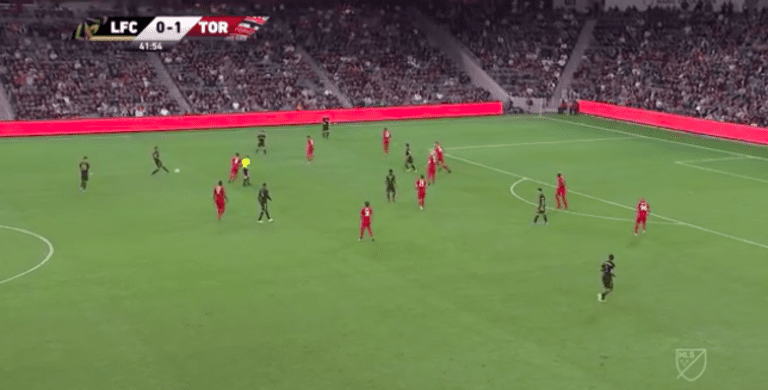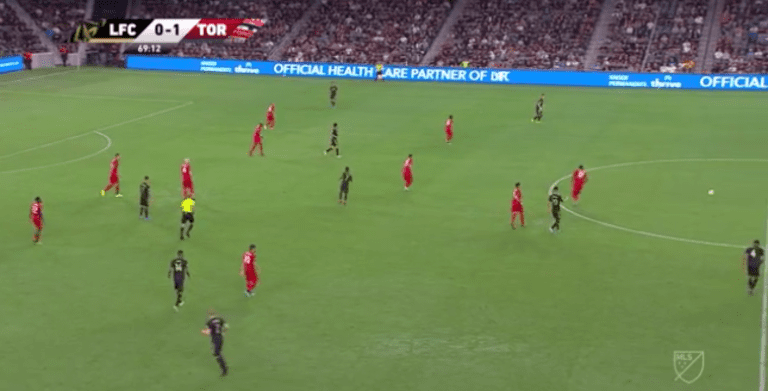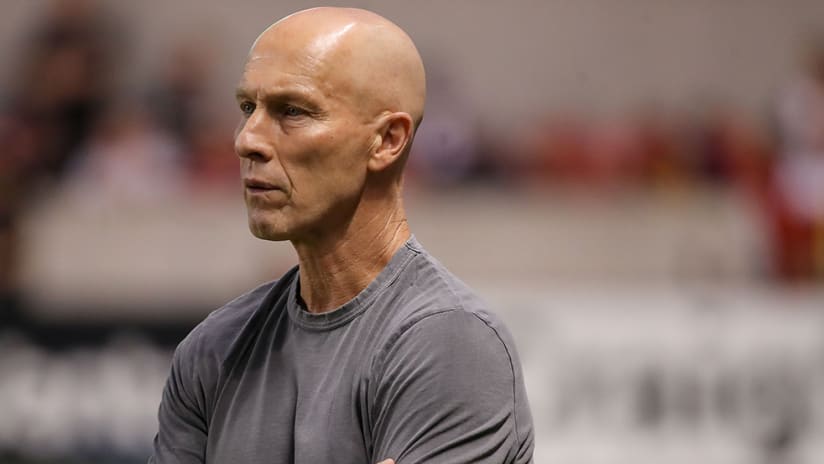The most dominant team over a 26-game stretch in league history, LAFC have now gone five games without a win.
To understand how we got here, let’s look at the path to this point.
The Black & Gold were historically unstoppable. They were particularly great at three things:
- Passes that split an opposing defense, particularly between the outside back and the center back
- Winning the ball back quickly after a turnover in the middle of the field
- Attacking transitions
Teams could not cope with those three elements of LAFC’s game. For some reason, though, opponents didn’t adjust their own style to combat LAFC's strengths. Bob Bradley's team were able to do the same patterns over and over.
In the last five games, however, we’ve seen teams adjust. It seemed clear to me via the eye test, but I wanted to put some numbers to it.
In the five-game winless streak:
- The number of passes that are categorized as long balls or launched forward, according to Opta, that the five opponents attempted has increased by 8% against LAFC compared to their season averages. Toronto, Minnesota, Orlando and LA each went up by more than 17%. Only Philadelphia didn’t adjust their passing habits.
- All five teams won the ball on average closer to their own goal, according to Opta, against LAFC than they have compared to their season averages. This suggests that they dropped their defensive lines closer to their own goal.
Both of these makes sense. If you don’t want LAFC to split you, you drop and stay more compact. If you don’t want LAFC to win the ball in a good spot and transition, you attempt to play more direct.
Now, let’s look at LAFC's previous five games, all of which they won, against RBNY, RSL, San Jose, New England and Atlanta.
- The only team that played more direct, according to the metrics mentioned above, were Atlanta. The other four teams attempted roughly the same ratio of direct passes to normal passes as they do in other games.
- The only team that won the ball closer to their own goal were the Red Bulls; the other four teams won the ball in the same spot or farther from their own goal.
In other words, we didn’t see any major adjustments by the teams playing against LAFC in that five-game span. This was a continued trend from what we saw in the first two-thirds of the season. Opponents have only started to really cater their game plans for the league leaders in the last month.
Have LAFC regressed? No.
They’ve still been dominant through the run of play. Their total passes attempted have increased in the last four games, as have their chances created, passes in the attacking third and passes in the opponent’s penalty area. But, teams have taken away their three bread and butter actions. LAFC dominate the majority of the game, but don’t get to do the specific moments they want to do the most.
Have LAFC been doing something wrong? No.
Rather, LAFC have a new problem in front of them that they have yet to figure out. These two moments from Saturday's game against Toronto are pretty typical for LAFC recently. Notice how compact Toronto are, especially horizontally. If I were to coach against LAFC, the main priority would be keeping the outside backs tight to the center backs. I would tell the outside backs, "if someone successfully slips a pass inside of you, you are personally paying for the end of the year dinner."


As Bob Bradley told reporters after Saturday's 1-1 draw with Toronto, "That's the hardest part of football, breaking down a team that's deep like that."
When teams defend like that, you have to accept the space wide. It doesn't mean you stop trying to play through the middle, but you need to be able to create goals from outside of the block. And LAFC still need to get more efficient in those areas.
After the Toronto game, Bradley noted: "The mix of our wide players — when they're outside, when they're narrow — I think we still need to do better with that part. And in the moments when they are narrow, we can still more in the right situations to get our outside backs pushed up farther."
In other words, when a team sits deep against you and only gives you the wide areas, you have two options:
- Isolate the area so wingers can go 1v1
- Overload the area so you can play combinations
It's the second part that LAFC have the largest room for growth.
The most important attackers for LAFC will now be the outside backs. They are the spare players, and the ones with the most space. Thus far in the season, though, Bradley has kept the outside backs somewhat restricted because they position themselves to protect against the counter. Conversely, the two attacking midfielders drive forward. He needs to switch that. He needs to drop Mark-Anthony Kaye or Latif Blessing to a more protective role and give the outside backs freedom to fly forward on the overlap or underlap.
More specifically, the outside backs need to arrive late. When you're in possession, you can start the outside backs high, either central or wide depending on the winger's positioning; or you can keep the wingers wide and have the outside backs run forward as the play develops. When the outside backs arrive later, it gives the defense less time to adjust. It's a move that Liverpool have used effectively the last two years, and the Seattle Sounders have used the most in MLS.
The next question is: Can the current players in those spots, Jordan Harvey and Steven Beitashour, do that job? Harvey and Beitashour are two of the most well-rounded outside backs in MLS over the last decade. Neither is a fully attacking wide player. If Bradley decides he needs something different, he has options. Mohamed El-Munir is essentially a converted winger now playing outside back; Blessing, formerly a winger and now a center mid, has played minutes at right back. Both would provide a more natural attacking player in those spots.
But...as always, there's a counter problem. As LAFC gets more adventurous with those outside backs, they open a new can of worms. Matt Doyle broke it down on Sunday's Matchday Central:
Fix one thing, create a new problem.
This is a compliment to the rest of the league. LAFC set a tactical bar; it took a while, but teams have started to catch up.
I still think LAFC will figure it out and win Supporters' Shield. And if they do, the key players will be the outside backs.












